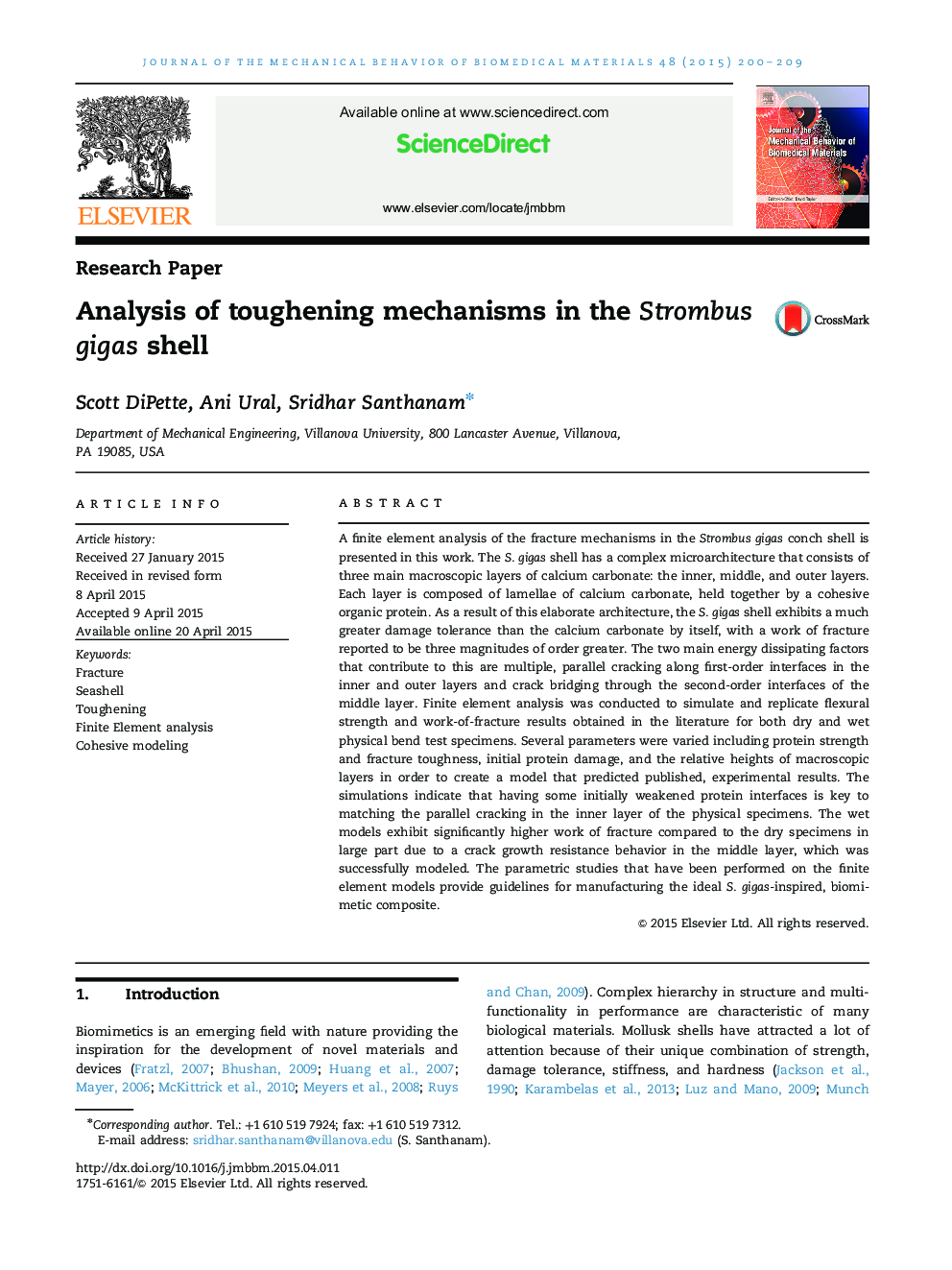| Article ID | Journal | Published Year | Pages | File Type |
|---|---|---|---|---|
| 7208480 | Journal of the Mechanical Behavior of Biomedical Materials | 2015 | 10 Pages |
Abstract
A finite element analysis of the fracture mechanisms in the Strombus gigas conch shell is presented in this work. The S. gigas shell has a complex microarchitecture that consists of three main macroscopic layers of calcium carbonate: the inner, middle, and outer layers. Each layer is composed of lamellae of calcium carbonate, held together by a cohesive organic protein. As a result of this elaborate architecture, the S. gigas shell exhibits a much greater damage tolerance than the calcium carbonate by itself, with a work of fracture reported to be three magnitudes of order greater. The two main energy dissipating factors that contribute to this are multiple, parallel cracking along first-order interfaces in the inner and outer layers and crack bridging through the second-order interfaces of the middle layer. Finite element analysis was conducted to simulate and replicate flexural strength and work-of-fracture results obtained in the literature for both dry and wet physical bend test specimens. Several parameters were varied including protein strength and fracture toughness, initial protein damage, and the relative heights of macroscopic layers in order to create a model that predicted published, experimental results. The simulations indicate that having some initially weakened protein interfaces is key to matching the parallel cracking in the inner layer of the physical specimens. The wet models exhibit significantly higher work of fracture compared to the dry specimens in large part due to a crack growth resistance behavior in the middle layer, which was successfully modeled. The parametric studies that have been performed on the finite element models provide guidelines for manufacturing the ideal S. gigas-inspired, biomimetic composite.
Related Topics
Physical Sciences and Engineering
Engineering
Biomedical Engineering
Authors
Scott DiPette, Ani Ural, Sridhar Santhanam,
